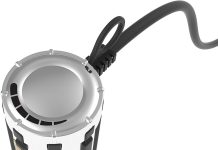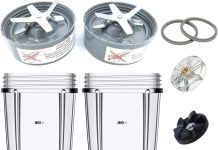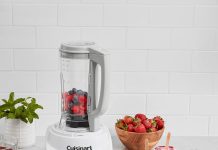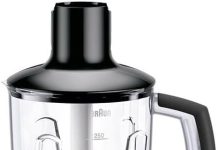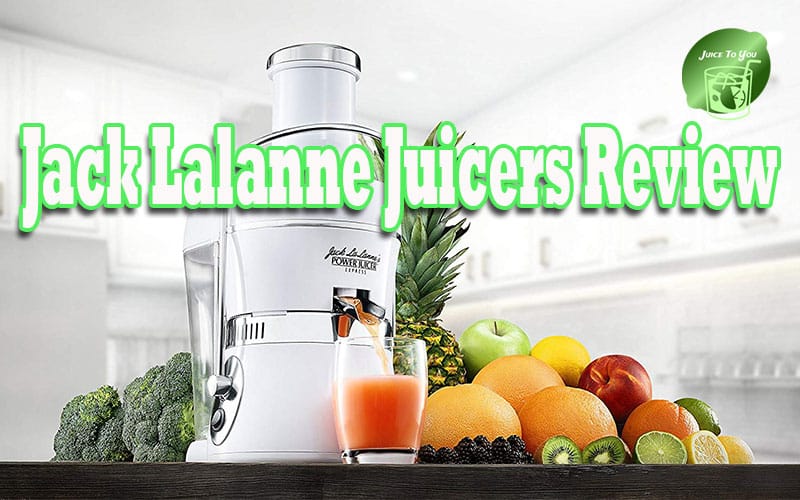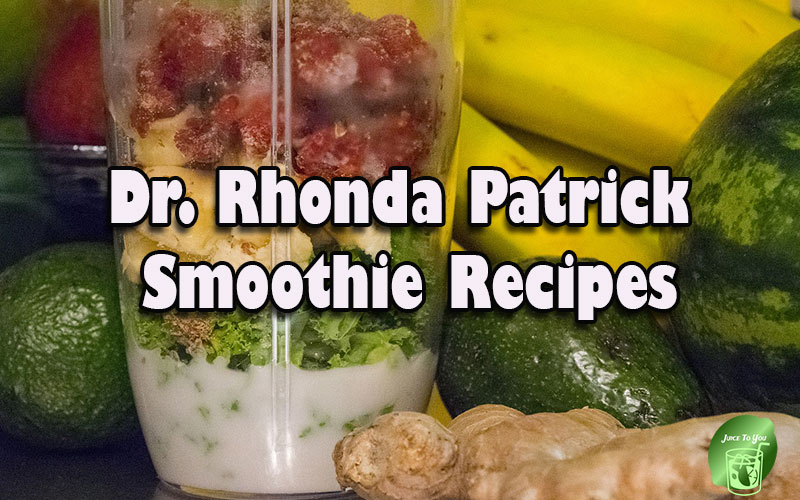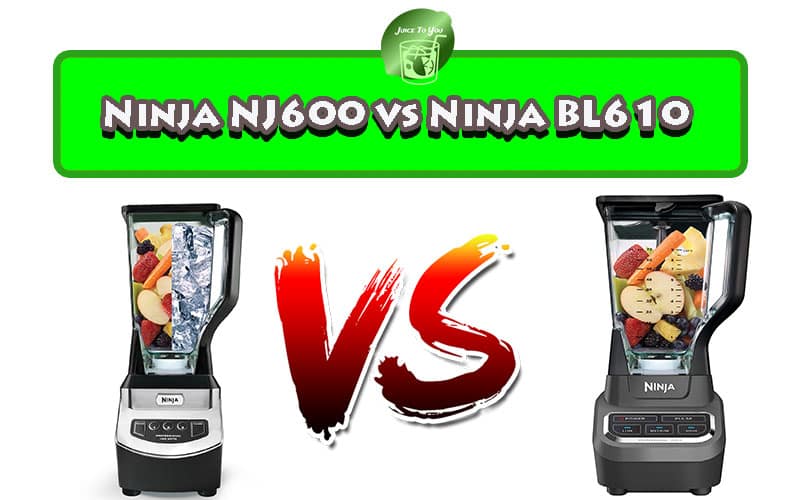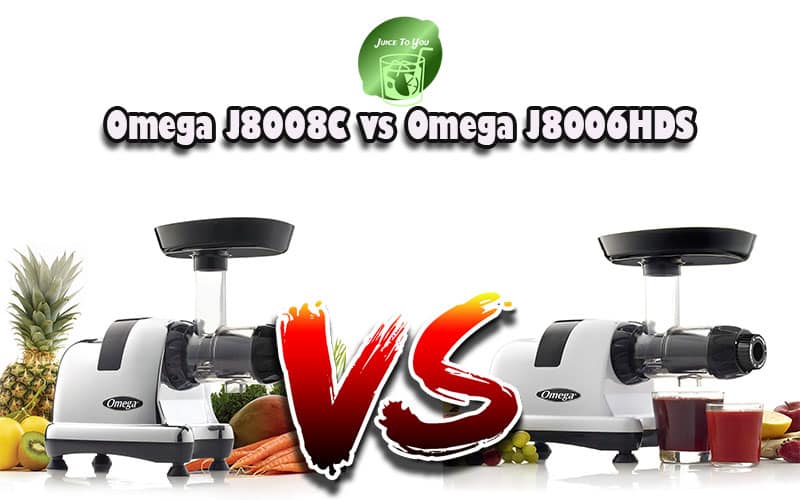Juicing has become an immensely popular trend in recent years, with more and more people realizing the benefits of fresh, nutrient-rich juices. But amidst the frenzy of finding the perfect juicer, one question often lingers: what is the recommended RPM (rotations per minute) for juicers? While it might seem like a seemingly insignificant detail, the RPM actually plays a crucial role in determining the quality and nutrition of your juice. In this article, we will explore the optimal RPM range for juicers and how it affects the final product, ensuring that you can juice with confidence and maximize your juicing experience.
Review contents
Importance of RPM in Juicers
When it comes to juicers, the RPM (rotations per minute) plays a crucial role in determining the overall performance and efficiency of the machine. The RPM refers to the speed at which the juicer’s motor rotates, and it has a direct impact on several key factors, including juice yield, nutrient retention, noise level, motor durability, and pulp consistency. Understanding the importance of RPM can help us make informed decisions when choosing the right juicer for our needs.
Efficiency and Juice Yield
One of the primary factors affected by the RPM of a juicer is its efficiency in extracting juice from fruits and vegetables. Generally, juicers with higher RPMs tend to have faster extraction times, as the high-speed spinning motion quickly separates the juice from the pulp. This makes high-speed juicers ideal for individuals who value speed and convenience in their juicing routine.
However, it’s important to note that high-speed juicers may sacrifice some juice yield compared to slower-speed models. The high RPM can generate more heat and introduce more air into the juicing process, which may lead to oxidation and reduce the overall amount of juice extracted. So, if maximizing juice yield is a priority for you, opting for a slower RPM may be a better choice.
Nutrient Retention
Another critical aspect affected by the RPM of a juicer is the retention of essential nutrients. The juicing process involves breaking down the cell walls of fruits and vegetables to release their juices, which contains a multitude of vitamins, minerals, and enzymes. The speed at which this process occurs can impact the preservation of these nutrients.
Low-speed juicers, which typically have RPMs between 80 and 120, are known for their ability to minimize heat generation and oxidation during juicing. This slower and gentler process helps preserve the vital enzymes and nutrients in the juice, resulting in a higher-quality and more nutrient-dense beverage.
Noise Level
Noise level is often a concern for those who want to enjoy a peaceful and quiet juicing experience, especially in the early morning hours or late at night. The RPM of a juicer can have a significant impact on the noise it produces during operation.
Generally, juicers with higher RPMs tend to be noisier due to the rapid spinning motion of their motors. The high-speed centrifugal juicers, in particular, are known for their louder operation. On the other hand, slow-speed juicers, such as masticating and triturating juicers, operate at lower RPMs and produce significantly less noise.
Motor Durability
The RPM of a juicer also affects the durability and longevity of its motor. High-speed juicers often have powerful motors that can withstand the rapid rotations required for efficient juicing. However, the constant high-speed operation can put more strain on the motor and reduce its lifespan over time.
In contrast, slow-speed juicers have motors that operate at a more moderate pace, resulting in less wear and tear. The slower RPM puts less stress on the motor, allowing for prolonged use without compromising its performance. If you’re looking for a juicer with a motor built to last, opting for a model with a lower RPM may be a wise choice.
Pulp Consistency
The final factor impacted by the RPM of a juicer is the consistency of the pulp left behind after juicing. Some individuals prefer a drier pulp, while others like a pulpier texture in their juice. The RPM plays a role in determining the consistency of the pulp produced by the juicer.
High-speed centrifugal juicers, with their rapid rotations, often result in a wetter pulp since they extract the juice quickly and less thoroughly. On the other hand, slow-speed juicers tend to produce drier pulp, indicating more thorough extraction of the juice.
Types of Juicers
Now that we understand the importance of RPM in juicers, let’s explore the different types of juicers available in the market. Each type has its own unique characteristics and functions, catering to different juicing preferences.
Centrifugal Juicers
Centrifugal juicers are among the most commonly used juicers on the market. They operate at high speeds, typically ranging from 3,000 to 16,000 RPM. These juicers work by using a rapidly spinning blade to separate the juice from the produce.
Centrifugal juicers are known for their fast juicing process, making them suitable for individuals who value speed and convenience. However, the high RPM and fast extraction can lead to lower juice yield and potentially reduced nutrient retention. Additionally, the noise level tends to be higher compared to other types of juicers.
Masticating Juicers
Masticating juicers, also known as slow juicers or cold press juicers, operate at much lower speeds compared to centrifugal juicers. They typically have RPMs ranging from 40 to 120, allowing for a gentler and more methodical juicing process.
These juicers work by crushing and grinding the produce to extract the juice slowly. The slow speed helps minimize heat generation, oxidation, and foaming, resulting in higher juice yield and better nutrient retention. Masticating juicers also produce less noise and tend to be more versatile in terms of the types of produce they can handle.
Triturating Juicers
Triturating juicers, also known as twin gear juicers, are the slowest and most advanced type of juicers available. They utilize two interlocking gears that rotate at exceptionally low speeds, usually around 80 RPM or lower.
Triturating juicers are known for their exceptional juice yield and nutrient retention. The slow and precise extraction process ensures optimal juice extraction while preserving the vital nutrients in the juice. These juicers are often used by avid juicers and individuals who prioritize the highest quality juice.
Recommended RPM for Centrifugal Juicers
The recommended RPM for centrifugal juicers can vary depending on the specific model and brand. However, we can categorize centrifugal juicers into two main types based on their speed: high-speed centrifugal juicers and low-speed centrifugal juicers.
High-Speed Centrifugal Juicers
High-speed centrifugal juicers typically have RPMs ranging from 10,000 to 16,000. These juicers are designed for fast and efficient juicing, making them ideal for individuals who prioritize convenience and speed. However, due to the high RPM, they may have lower juice yield and nutrient retention compared to slower juicers.
Low-Speed Centrifugal Juicers
Low-speed centrifugal juicers operate at RPMs between 3,000 and 10,000, offering a balance between speed and extraction quality. These juicers provide a moderately fast juicing process while still maintaining a decent juice yield and nutrient retention. They are suitable for those who want a compromise between convenience and juicing performance.
Recommended RPM for Masticating Juicers
Masticating juicers are generally recommended for individuals who prioritize juice quality and nutrient retention over speed. Within the masticating juicer category, we can further distinguish between single gear masticating juicers and twin gear masticating juicers based on their recommended RPM.
Single Gear Masticating Juicers
Single gear masticating juicers typically operate at RPMs between 80 and 120. These juicers offer a slower but still relatively efficient juicing process. They are suitable for individuals who want a good balance between juice quality, extraction speed, and convenience.
Twin Gear Masticating Juicers
Twin gear masticating juicers operate at even lower RPMs, usually around 80 or lower. These juicers excel in terms of juice yield, nutrient retention, and overall juice quality. They are ideal for those who prioritize the highest quality juice and are willing to invest in a more advanced and slow juicing process.
Recommended RPM for Triturating Juicers
Triturating juicers operate at exceptionally low RPMs, typically around 80 or lower. This slow and meticulous juicing process ensures maximum juice extraction and nutrient retention. If you want the highest quality juice with minimal heat generation and oxidation, a triturating juicer with its low RPM is highly recommended.
Factors Affecting Recommended RPM
The recommended RPM for juicers can vary based on several factors, including the type of produce, texture of produce, desired consistency, and overall speed preference.
Type of Produce
Different types of produce have varying textures and consistencies, which can influence the ideal RPM for juicing. Softer fruits and leafy greens may require a slower RPM to ensure optimal extraction and preserve delicate nutrients. Harder fruits and vegetables, on the other hand, may benefit from a higher RPM to effectively juice them.
Texture of Produce
The texture of the produce also plays a role in determining the recommended RPM. Juicers with adjustable speed settings can be beneficial, as they allow us to customize the RPM based on the texture of the produce we are juicing. Softer produce generally requires slower speeds, while harder produce may benefit from higher speeds.
Desired Consistency
The desired consistency of the juice also influences the recommended RPM. If you prefer a pulpier juice, a slower RPM may be suitable, as it tends to produce more textured juices with a higher pulp content. Conversely, if you prefer a smoother and more refined juice, a higher RPM may be preferred to achieve a more filtered result.
Overall Speed
Lastly, your overall speed preference in the juicing process should be considered when determining the recommended RPM. If you prioritize speed and convenience, opting for a higher RPM juicer may be more suitable. However, if juice quality and nutrient retention are your primary concerns, a slower RPM juicer would be the better choice, even if it means sacrificing some speed.
Benefits of Slow-Speed Juicers
Choosing a slow-speed juicer, such as a masticating or triturating juicer, offers several key benefits that make them highly desirable among juicing enthusiasts.
Higher Juice Yield
Slow-speed juicers are known for their exceptional juice yield. The slow and methodical extraction process ensures maximum juice extraction, leaving behind drier pulp. This means you get the most out of your fruits and vegetables, resulting in more juice overall and ultimately maximizing the value of the produce you use.
Better Nutrient Retention
The slow juicing process of slow-speed juicers helps preserve the essential nutrients found in fruits and vegetables. The low RPM minimizes heat generation and oxidation, which can degrade the nutritional content of the juice. By preserving the vitamins, minerals, and enzymes, slow-speed juicers provide a healthier and more nutrient-dense juice.
Quieter Operation
One of the significant advantages of slow-speed juicers is their quieter operation. The lower RPM results in less noise during the juicing process, making them ideal for individuals who prefer a peaceful and quiet environment while making their juice. This is especially beneficial for those who like to start their day with a refreshing glass of juice without disturbing others in the household.
Extended Motor Life
The slower RPM in slow-speed juicers puts less strain on the motor, resulting in extended motor life. The reduced wear and tear allow the juicer to operate smoothly and efficiently for more extended periods without the risk of overheating or premature motor failure. Investing in a slow-speed juicer ensures a durable and long-lasting appliance.
Choosing the Right RPM for Your Juicer
To choose the right RPM for your juicer, consider the following steps:
Consider Your Juicing Needs
First and foremost, consider your juicing needs and priorities. Do you value speed and convenience above all else, or are you more concerned about juice quality and nutrient retention? Understanding your preferences will help you determine the optimal RPM range for your juicer.
Review Product Specifications
When researching different juicer models, review their product specifications to find out the RPM range. Manufacturers often include this information in their product descriptions or manuals. Evaluate whether the RPM aligns with your desired juicing experience and goals.
Read Customer Reviews
Take advantage of customer reviews to gain insight into the performance of juicers you’re considering. Look for feedback on extraction efficiency, noise level, juice yield, and overall satisfaction with the juicer’s RPM. Real-life experiences can provide valuable information to help you make an informed decision.
Consult with Experts
If you’re still unsure about the RPM range that would be best for you, it may be helpful to consult with juicing experts or professionals. They can provide insights and recommendations based on their expertise and experience. Utilize online forums, juicing communities, or reach out personally to gain advice from those knowledgeable in the field.
Conclusion
In conclusion, understanding the importance of RPM in juicers is vital for selecting the right juicer that suits your juicing needs and preferences. The RPM impacts efficiency and juice yield, nutrient retention, noise level, motor durability, and pulp consistency. Different types of juicers, such as centrifugal, masticating, and triturating, operate at varying RPMs, each offering unique benefits. Factors like the type and texture of produce, desired consistency, and overall speed preference can affect the recommended RPM. Choosing the right RPM for your juicer requires considering your juicing needs, reviewing product specifications, reading customer reviews, and consulting with experts. By being mindful of the RPM, you can ensure a satisfying juicing experience that delivers high-quality, nutrient-rich juice.






